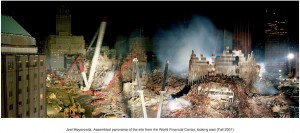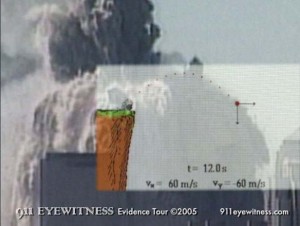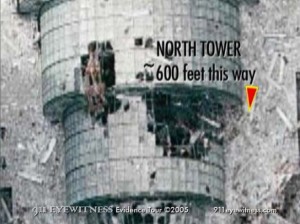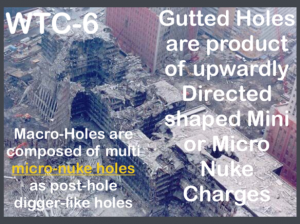Mystery Solved: The WTC Was Nuked on 9/11
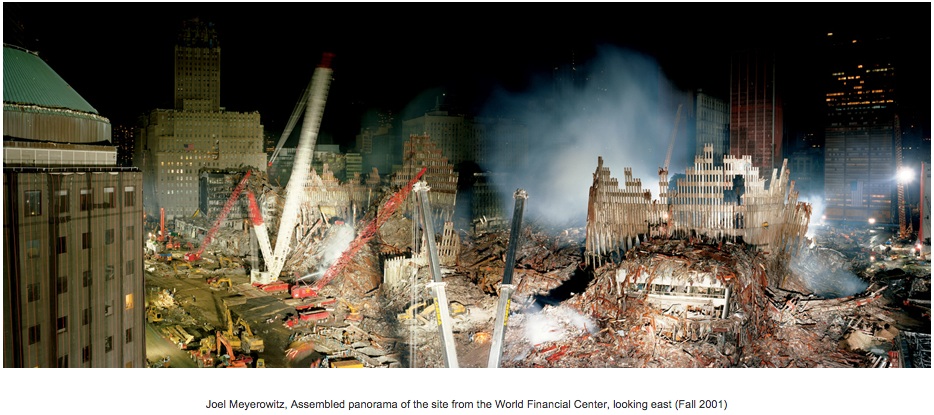
Mystery Solved: The WTC Was Nuked on 9/11
Posted on April 20, 2013
By Don Fox, Ed Ward MD and Jeff Prager
The debate has raged for more than a decade about what caused the Twin Towers to “collapse” in approximately 10 seconds each — 9 seconds for the South Tower, 11 for the North. A large and growing percentage of the public has become skeptical of the conclusion of the government’s official NCSTAR 1 report, according to which, “NIST found no corroborating evidence for alternative hypotheses suggesting that WTC towers were brought down by controlled demolition using explosives planted prior to 9/11.”
Skepticism of NIST’s conclusions is well founded. There is eyewitness testimony as well as abundant video and audio evidence of explosions at the WTC on 9/11. There is also seismic data that demonstrates that high powered explosives were used to demolish the Twin Towers. The gross observable video evidence — if you are willing to believe your own eyes — shows that the Twin Towers were destroyed from the top down and the inside out.
We believe that only mini-nukes — which were probably neutron bombs — planted in the center columns of the buildings, detonated from top to bottom and configured to explode upward, can explain what is observed. If they were used to blow apart one ten-floor cube per second, for example, then, since the North Tower stood at 110 floors, that would have taken 11 seconds, while, since the top three cubes of the South Tower tilted over and were blown as one, in that case, it would have taken only 9, which coincides with NIST’s own times.
This is a controversial contention. Judy Wood, Ph.D., has proclaimed that a Tesla-inspired directed energy weapon (DEW) was responsible for the destruction of the WTC buildings and has vehemently denied nuclear bombs were used. Steve Jones, Ph.D., and his followers promote the theory that an incendiary (nanothermite) was the cause of the destruction of the WTC buildings, while they also deny that nukes were used. So these seemingly opposed camps agree on one thing: nukes were not used on 9/11!
The nanothermite hypothesis has been discredited on multiple occasions in articles by T. Mark Hightower and Jim Fetzer, including “Has nanothermite been oversold to the 9/11 community?”, “Is ’9/11 truth’ based upon a false theory?”, and “Nanothermite: If it doesn’t fit, you must acquit”. Since it is a principle (law) of materials science that an explosive can destroy a material only if it has a detonation velocity equal to or greater than the speed of sound in that material, where the speed of sound in concrete is 3,200 m/s and in steel 6,100 m/s, while the highest detonation velocity that has been attributed to nanothermite is 895 m/s, it should be obvious: You can’t get there from there!
The DEW hypothesis turns out to be difficult to test, since Judy Wood defines DEWs as sources of energy that are greater than conventional and can be directed, which even encompasses micro and mini nukes within its scope. As earlier articles have explained, including “9/11 Truth will out: The Vancouver Hearings II” and “Mini Neutron Bombs: A Major Piece of the 9/11 Puzzle”, there are multiple grounds for preferring the mini or micro nuke hypothesis over the DEW alternative, which emerge with particular clarity from a study of the dust samples collected by the US Geological Survey. It is ironic that, while the “thermite sniffers” also focus on dust samples, they seem to have missed what we have to learn from them.
Indeed, the nuclear component of the decimation of World Trade Center buildings 1, 2, 6 and 7 is the darkest and most closely guarded secret of 9/11. With so many folks claiming different theories it is difficult for average people to know what to believe. Fortunately, we have scientific proof of what happened at Ground Zero. The dust and water samples reveal the true story of what happened on 9/11. This article thus provides more of the scientific evidence–especially from the USGS dust samples–that settles the debate in favor of the demolition of the WTC buildings as having been a nuclear event.
DEBRIS EJECTED OVER 600 FEET
The explosives that demolished the Twin Towers were so powerful that North Tower debris was ejected up at a 45° angle and out over 600 feet into the Winter Garden. This feat alone puts an end to the notion that the buildings were “dustified” where they stood or that an incendiary like nanothermite was the responsible for the destruction of two 500,000 ton 110 story skyscrapers or that the buildings collapsed due to fire.
Debris ejected up at a 45° angle
Engineers estimate that 1/3 of the buildings were completely vaporized. And as Judy Wood likes to point out no toilets were found in the rubble. 90% of the debris from the Twin Towers destruction landed outside the building’s footprints. What type of explosives could cause this sort of damage? The only thing known to man that can explain this is nuclear bombs.
PROOF OF FUSION:
The Department of Energy (DOE) collected water samples from the basement of Building 6 eleven days after 9/11 that showed tritium levels 55 times greater than background. How does this prove fusion?
Let’s start with defining tritium: Tritium is an isotope of hydrogen containing one proton and two neutrons. Tritium is radioactive with a half-life of 12.32 years. Also Known As: hydrogen-3, 3H (Helmenstine)
The Canadian Nuclear Safety Commission provides us some excellent background information on hydrogen:
Hydrogen is the most abundant element in the universe, comprising approximately 90% of the luminous universe by weight. Ordinary hydrogen (1H) accounts for greater than 99.985% of all naturally-occurring hydrogen, whereas deuterium (2H) comprises approximately 0.015%. By comparison, tritium (3H) represents only approximately 10-16 percent of hydrogen naturally occurring. Tritium is a rare but natural isotope of hydrogen (H), and is the only natural hydrogen isotope that is radioactive. The tritium atom is sometimes designated T to distinguish it from the common lighter isotope. Notwithstanding the difference in mass, tritium can be found in the same chemical forms as hydrogen. The most important forms, from the perspective of atmospheric behavior of tritium, are tritiated hydrogen gas (HT) and tritiated water (HTO). These tritiated forms behave chemically like hydrogen gas (H2) and water (H2O).
Natural Sources
Tritium is generated by both natural and artificial processes. Tritium is naturally produced primarily through the interaction of cosmic radiation protons and neutrons with gases (including nitrogen, oxygen and argon) in the upper atmosphere.
Anthropogenic Sources
In addition to its natural sources, tritium also has a number of anthropogenic sources which account for the dominant proportion of the global tritium inventory. Anthropogenic tritium sources include fallout from nuclear weapons testing, nuclear reactors, future fusion reactors, fuel reprocessing plants, heavy water production facilities and commercial production for medical diagnostics, radiopharmaceuticals, luminous paints, sign illumination, self-luminous aircraft, airport runway lights, luminous dials, gauges and wrist watches, and others.
Commercial uses of tritium account for only a small fraction of the tritium used worldwide. Instead, the primary use of tritium has been to boost the yield of both fission and thermonuclear (or fusion) weapons, increasing the efficiency with which the nuclear explosive materials are used.
Thermonuclear Detonation during Nuclear Weapons Testing
Nuclear tests have been conducted in the atmosphere since 1945, producing tritium in amounts that greatly exceed the global natural activity, particularly during 1954 to 1958 and 1961 to 1962 when a number of large-yield test series were undertaken. The tritium activity arising from atmospheric nuclear tests can be estimated from the fission and fusion yields of the weapons tests or from environmental measurements. For example, the tritium activity produced per unit yield is dependent upon the attributes of the device, as well as on the characteristics of the detonation site, and tritium generation from fusion reactions is much higher than from fission. The tritium that is produced by a nuclear explosion is almost completely converted to tritiated water (HTO), which then mixes with environmental water. (“Investigation of the,” 2009)
What about WTC-6?
We have established that tritium is a rare hydrogen isotope, the vast majority of the tritium that is produced is used in nuclear weapons and that the tritium produced by a thermonuclear explosion is converted into tritiated water (HTO). Tritiated water WAS found in the basement of Building 6 at concentrations 55 times background levels. Here is Ed Ward’s breakdown of the DOE’s water sample data:
1. Trace definition as it applies to quantity: Occurring in extremely small amounts or in quantities less than a standard limit (In the case of tritium, this standard level would be 20 TUs – the high of quoted standard background levels.) http://www.thefreedictionary.com/trace
2. The stated values of tritium from the DOE report “Study of Traces of Tritium at the World Trade Center”. “A water sample from the WTC sewer, collected on 9/13/01, contained 0.164±0.074 (2ó) nCi/L (164 pCi/L +/- 74 pCi/L – takes 1,000 trillionths to = 1 billionth) of HTO. A split water sample, collected on 9/21/01 from the basement of WTC Building 6, contained 3.53±0.17 and 2.83±0.15 nCi/L ( 3,530.0 pCi/L +/- 170 pCi/L and 2,830 pCi/L +/- 150 pCi/L), respectively. https://e-reportsext.llnl.gov/pdf/241096.pdf Pico to Nano converter – http://www.unitconversion.org/prefixes/picos-to-nanos-conversion.html Nano to Pico converter – http://www.unit-conversion.info/metric.html
3. 1 TU = 3.231 pCi/L (trillionths per liter) or 0.003231 nCi/L (billionths per liter) – http://www.hps.org/publicinformation/ate/q2282.html – (My original TU calculations came out to 3.19 pCi/L, but I will gladly accept these referenced minimally higher values. http://www.clayandiron.com/news.jhtml?method=view&news.id=1022 )
4. In 2001 normal background levels of Tritium are supposedly around 20 TUs (prior to nuclear testing in the 60′s, normal background tritium water levels were 5 to 10 TUs – http://www.hps.org/publicinformation/ate/q2282.html ). However, groundwater studies show a significantly less water concentration: Groundwater age estimation using tritium only provides semi-quantitative, “ball park” values: · <0.8 TU indicates sub modern water (prior to 1950s) · 0.8 to 4 TU indicates a mix of sub modern and modern water · 5 to 15 TU indicates modern water (< 5 to 10 years) · 15 to 30 TU indicates some bomb tritium http://www.grac.org/agedatinggroundwater.pdf But, instead of “5 to 15 TU” (which would make the increase in background levels even higher), I will use 20 TUs as the 2001 environmental level to give all possible credibility to the lie of “Traces”.
5. Let’s calculate the proven referenced facts. Tritium level confirmed in the DOE report of traces of tritium = 3,530 pCi/L (+/- 170 pCi/L, but we will use the mean of 3,530 pCi/L). 3,530
pCi/L (the referenced lab value) divided by the background level of 20TUs (20 X 3.231 p (1 TU = 3.21 pCi/L) = 64.62 pCi/L as the high normal background/standard level. 3,530 divided by 64.62 pCi/L = 54.63 TIMES THE NORMAL BACKGROUND LEVEL. 3,530 pCi/L divided by 3.231 pCi/L (1 TU) = 1,092.54 TUs
6. This is my ‘fave’ because lies tend to eat their young. Muon physicist Steven Jones calls 1,000 TUs “The graphs below show that hydrogen-bomb testing boosted tritium levels in rain by several orders of magnitude. (“Tritium in precipitation,”) (Jones, 2006) Yet, calls the EXACT SAME LEVELS quoted in nCi/L as “Traces” and “These results are well below the levels of concern to human exposure” (Jones, 2006). Interesting isn’t it.
7. Thomas M. Semkowa, Ronald S. Hafnerc, Pravin P. Parekha, Gordon J. Wozniakd, Douglas K. Hainesa, Liaquat Husaina, Robert L. Rabune. Philip G. Williams and Steven Jones have all called over 1,000 TUs of Tritium, “Traces”. Even at the height of nuclear bomb testing 98% – after thousands of Megatons of nuclear testing – of the rainwater tests were 2,000 TUs or less. https://e-reports-ext.llnl.gov/pdf/241096.pdf
8. It is also important to note that the tritium present was diluted by at least some portion of 1 million liters of water accounting for BILLIONS of TUs.
An important point that Jones glosses over is the dilution of water in the basement of WTC 6. If not for copious amounts of water sprayed on the WTC site undoubtedly the concentration of tritium would have been higher than the measured 55 times normal background levels.
Ed Ward’s Breakdown of the WTC Rain and Fire Hose Water, 4 Million Gallons of Dilution: http://groups.yahoo.com/group/EdWard-MD/message/136
WTC 6 = 1 acre (approx.)
WTC site = 16 acres. Rain = 4 million liters. 4/16 = 1/4 of a million liters deposits in WTC 6 in its 40 ft. (depth) by 120 ft. (diameter) crater.
WTC 6 was hot – see thermal images 2nd article on WTC Nukes.
Firemen = 12 million liters. Firemen would mostly be spraying the hot areas.
There are about 5 acres that gradually increase to maybe a total of 6 to 7 acres, but let’s be generous and say they sprayed 8 acres (this will lower the total amount of Tritium Units estimate).
8/16 = 1/2 of 12 million liters = 6 million liters spread over 8 acres = 3/4 of a million liters per acre.
Rain plus Firemen = 1 million liters in WTC 6 in the 40 ft (depth) by 120 ft (diameter) crater.
1 liter of the pooled water = 1,106 TUs X 1 million liters of water = 1.1066 BILLION TUs JUST IN WTC 6 (no other places were checked.)
This completely ignores 104 Million Liters (30 Million Gallons) pumped out of the bathtub and the drain water of 51 TUs. 120 million liters X 51 = 6.120 BILLION TUs.
This completely ignores the amount of Tritium in gas form that escapes into the atmosphere and gets massive dispersal.
Just what happened to Building 6? HOW did all of that tritium get in the basement in the first place?
Plume of smoke seen rising from the area where WTC6 stood:
To sum this up: we see a plume of smoke rising from Building 6, photos that show the building was blackened and bombed out before ANY debris from the Twin Towers hit it, a massive crater in the middle of the building and the DOE found massive quantities of tritium in the basement eleven days after 9/11. Only a thermonuclear explosion explains all of this, which strongly suggests that WTC-6 was nuked. And there is more proof.
PROOF OF FISSION:
The US Geological Survey collected samples of dust and airfall debris from more than 35 localities within a 1-km radius of the World Trade Center site on the evenings of September 17 and 18, 2001. The USGS was primarily looking for asbestos in the dust but they found a host of elements that when analyzed properly proves that nuclear fission took place at Ground Zero.
A quick glance at the chemistry table and immediately the presence of the elements such as cesium, uranium, thorium, barium, strontium, yttrium, rubidium, molybdenum, lanthanum, cerium, chromium and zinc raise suspicions. But deeper analysis shows that these elements correlate with each other according to relationships expected in a nuclear fission event.
Jeff Prager has done extensive work with the USGS dust samples and we’ll use some of the slides from his Vancouver Power Point presentation to help us analyze the USGS data:
Barium and Strontium
People might argue that strontium and barium could be found in building debris and they would be correct however strontium and barium could never, under any circumstances, be found as building debris constituents in a demolition in these quantities.
The levels never fall below 400 ppm for Barium and they never drop below 700 ppm for Strontium and they reach over 3000 ppm for both of them at WTC01-16, Broadway and John Streets. Why?
Barium and Strontium are rare Trace elements with limited industrial uses. The enormous peak in Barium and Strontium concentration at WTC01-16 is readily apparent in the chart at right. The concentration of the two elements reaches 3130 ppm for Strontium and 3670 ppm for Barium or over 0.3% by weight of the dust. This means that 0.37% of the sample was Barium and 0.31% of the sample was Strontium by weight at that location, WTC01-16, Broadway and John Streets. The Mean concentration for Barium including the very low girder coating samples is 533 ppm and for Strontium it’s 727 ppm. These are not Trace amounts. They are highly dangerous and extremely toxic amounts. They are also critical components of nuclear fission and the decay process.
Here we’re plotting the concentration of Barium at each location against the Strontium concentration. The correlation between the concentrations of the two elements, Barium and Strontium is extremely high.
The Coefficient of Correlation between the concentration of Barium and Strontium at the outdoor and indoor sampling locations is 0.99 to 2 decimal places (0.9897 to 4 decimal places). So we have a Correlation Coefficient between the concentration of Barium and the concentration of Strontium of 0.9897, or near perfect. The maximum Correlation Coefficient that is mathematically possible is 1.0 and this would mean we have a perfect match between the two factors we’re examining and the data points would lie on a straight line with no variation between them. To obtain a Correlation Coefficient of 0.9897 with this number of measurements (14) around Lower Manhattan is very, very significant indeed. What this means is that we can say that there’s a 99% correlation in the variation in the concentration between these two elements. They vary in lockstep; they vary together. When one element varies so does the other. We can state with absolute mathematical certainty that any change in the concentration of one of these elements, either the Barium or Strontium, is matched by the same change in the concentration of the other. Whatever process gave rise to the presence of either the Barium or the Strontium must have also produced the other as well. Fission is the only process that explains this.
Next we come to the detection of measurable quantities of Thorium and Uranium in the dust from the World Trade Center, elements which only exist in radioactive form. The graph below plots the concentration of Thorium and Uranium detected at each sampling location. Again, the last two locations, WTC01-08 and WTC01-09, are for the two girder coating samples. The Uranium concentration follows the same pattern as Thorium, although the graph scale does not show this markedly. Uranium follows the dip at WTC01-03 and WTC01-16 but the highest concentration of Uranium also matches Thorium in the second girder coating, WTC01-09, at 7.57ppm. 7.57 greatly exceeds normal Trace element levels. This equals 93 Becquerels per kilogram. Normal background radiation is approximately 12Bq/kg to 40Bq/kg with 40Bq/kg the highest level we would expect to see. This girder contains more than twice the expected level of uranium. The second girder contained 30.7 ppm of Thorium, 6 times as high as the lowest level of that element detected. Thorium is a radioactive element formed from Uranium by decay. It’s very rare and should not be present in building rubble, ever. So we have verifiable evidence that a nuclear fission event has taken place. As we said earlier, Thorium is formed from Uranium be alpha decay. An alpha particle is the same as a Helium nucleus, so this means we have one of the favored fission pathways: Uranium fissioning into a Noble Gas and the balancing elements, in this case Helium and Thorium.
The graph of Thorium versus Lithium including the Girder Coatings has exactly the same form as the graph showing Thorium versus Uranium, also including the Girder Coatings. Without the two Girder Coatings the correlation of Thorium to Lithium in the dust is completely linear. We therefore have compelling evidence that this fission pathway of Uranium to Thorium and Helium, with subsequent decay of the Helium into Lithium, has indeed taken place. It is out of the question that all of these correlations which are the signature of a nuclear explosion could have occurred by chance. This is impossible. The presence of rare Trace elements such as Cerium, Yttrium and Lanthanum is enough to raise eyebrows in themselves, let alone in quantities of 50 ppm to well over 100 ppm. When the quantities then vary widely from place to place but still correlate with each other according to the relationships expected from nuclear fission, it is beyond ALL doubt that the variations in concentration are due to that same common process of nuclear fission. When we also find Barium and Strontium present, in absolutely astronomical concentrations of over 400 ppm to over 3000 ppm, varying from place to place but varying in lockstep and according to known nuclear relationships, the implications are of the utmost seriousness. Fission occurred in NYC on 911.
Read More
https://donaldfox.wordpress.com/2013/04/20/mystery-solved-the-wtc-was-nuked-on-911/


